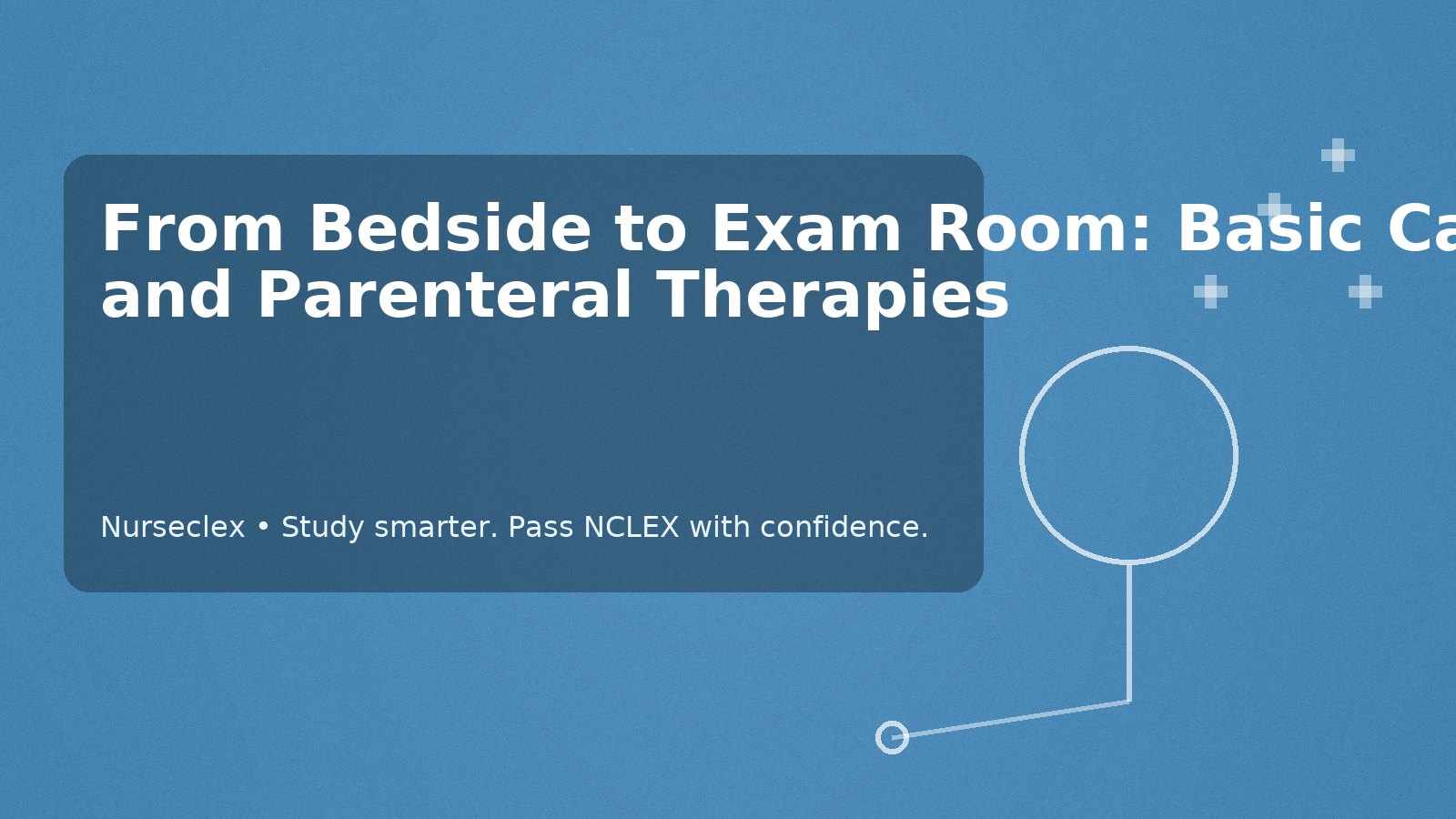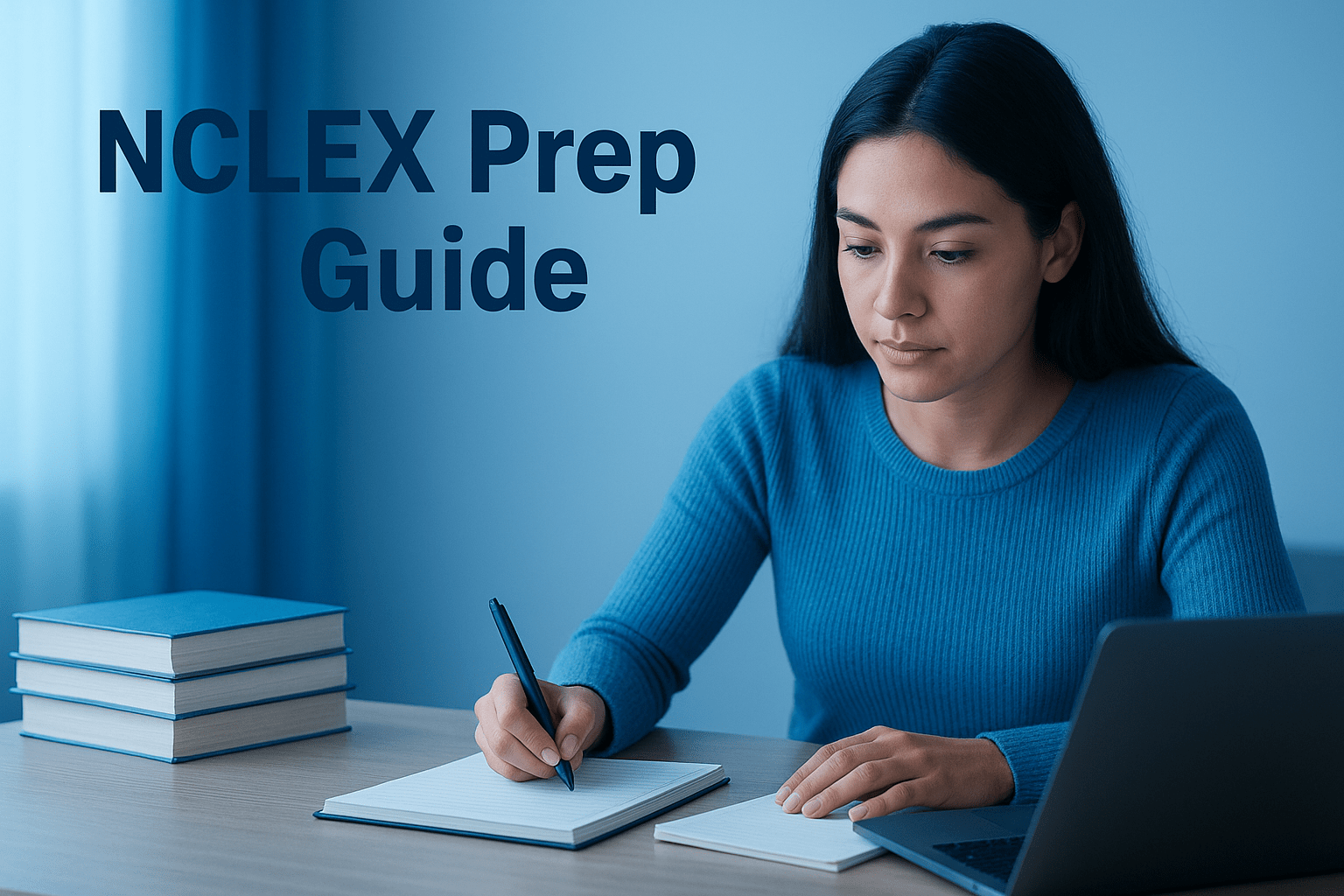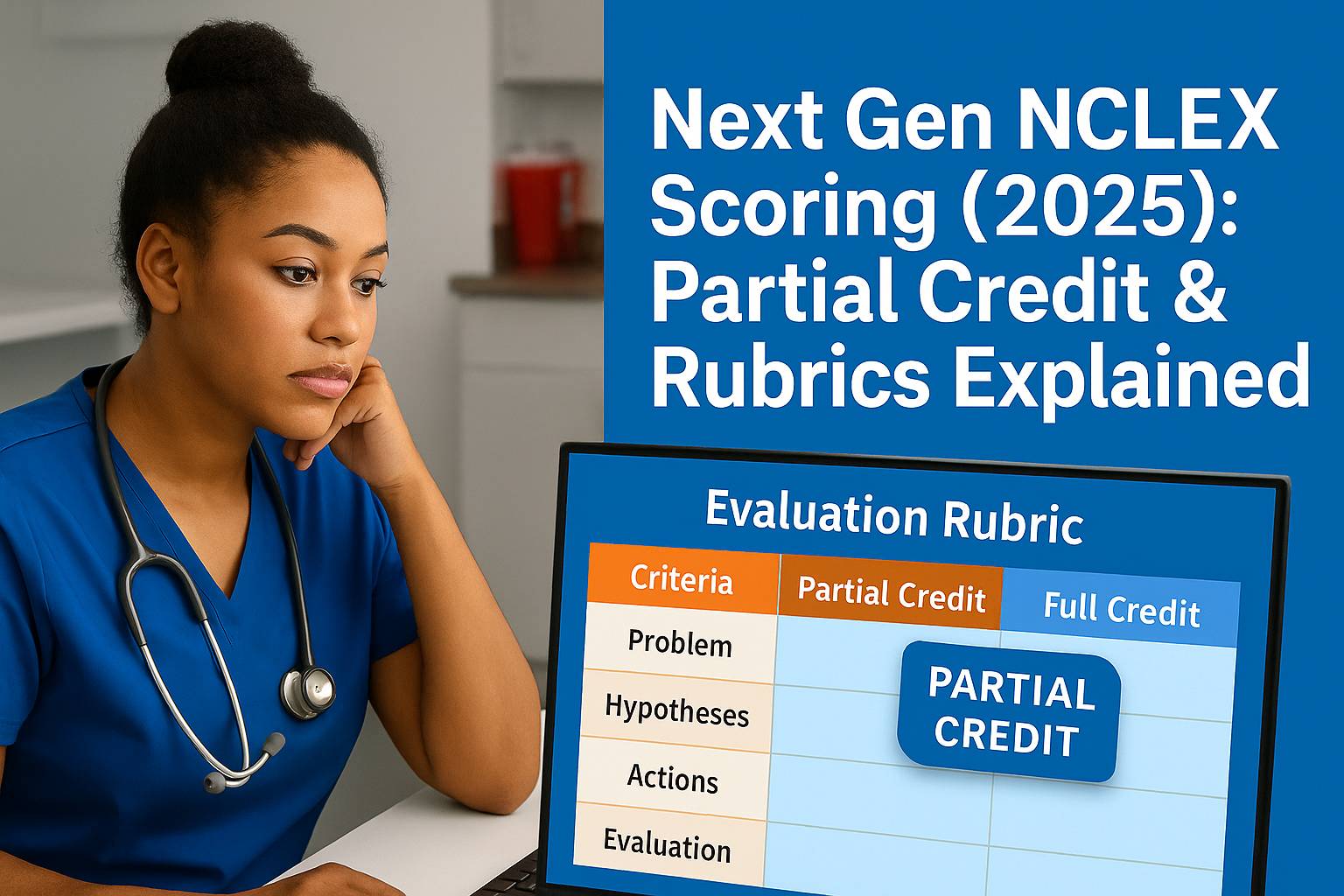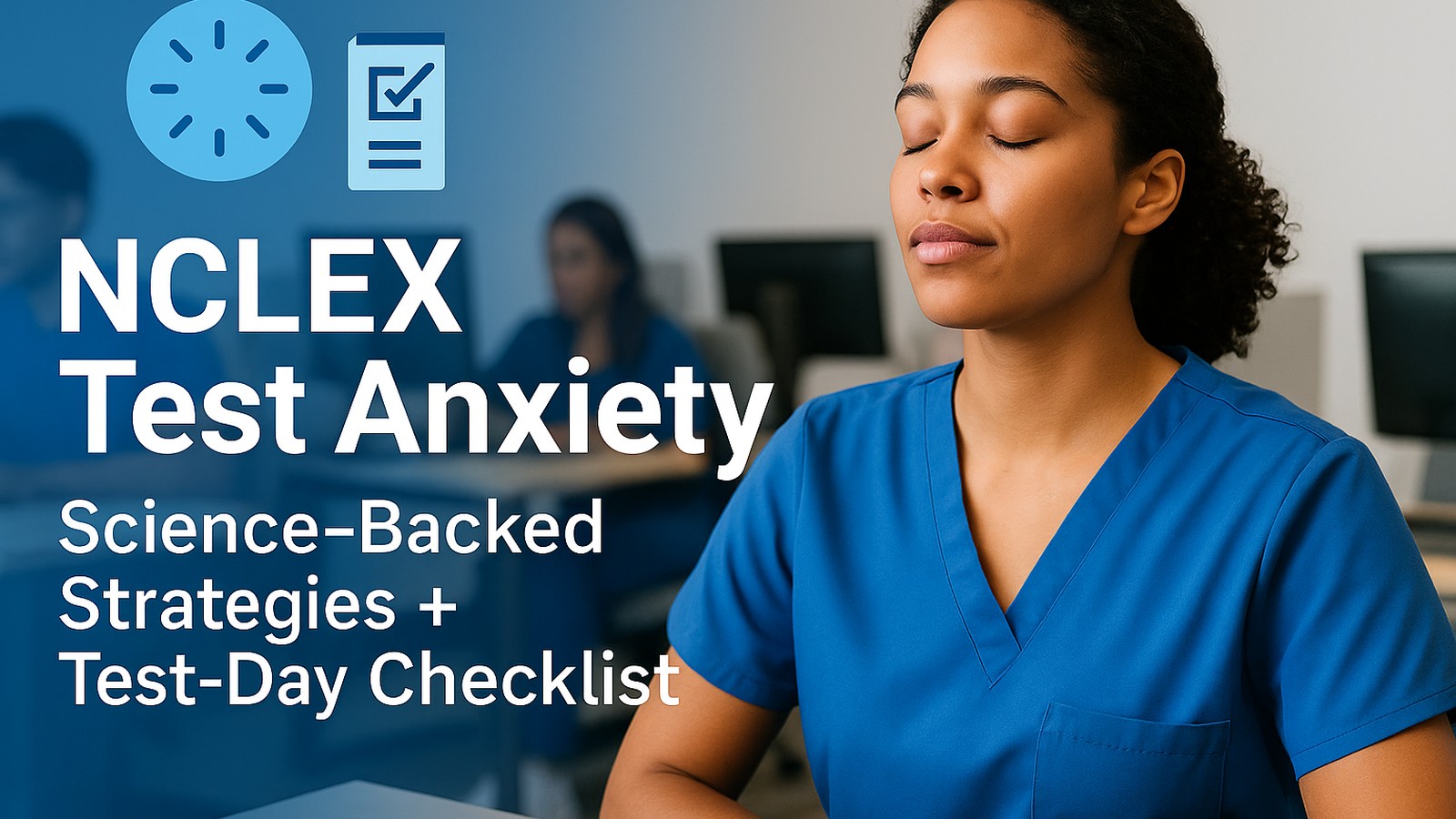Basic Care and Parenteral Therapies are the heart of nursing. Before any advanced protocol, nurses give safe, kind, basic care. That care builds trust. It also prevents problems. On the NCLEX, Basic Care and Parenteral Therapies fall under Basic Care and Comfort and Physiological Integrity. Together, they can make up 25–30% of the exam. Learn them well, and you’ll feel ready for your first bedside shift and the test.
At Nurseclex, we link textbook steps to real-life care. We turn Basic Care and Parenteral Therapies into small, clear actions you can do and remember. When you practice this way, NCLEX questions start to feel natural.
The Basics of Nursing Care & Comfort: Your Keystone
1) Activities of Daily Living (ADLs)
Help patients eat, move, bathe, and toilet safely. Comfort matters. Safety matters more. Strong ADL care prevents skin injury, falls, and infection—core parts of Basic Care and Parenteral Therapies.
NCLEX must-knows
-
Diet & Feeding: Manage special diets. Set up tube feeds correctly. Watch intake and output. Keep fluid balance in mind.
-
Elimination: Perform catheter care. Support bowel training. Empty and care for ostomies.
-
Mobility: Use gait belts and walkers correctly. Prevent falls. Turn and reposition on schedule.
-
Hygiene & Skin: Keep skin clean and dry. Provide oral care. Reposition at least every 2 hours to prevent pressure injuries.
Nurseclex Tip: Safety before comfort. If aspiration is a risk, raise the head of the bed before bringing the meal tray.
2) Comfort and Pain Management
Good pain care needs empathy and judgment—key parts of Basic Care and Parenteral Therapies.
Non-pharm options
-
Repositioning
-
Heat or cold
-
Massage
-
Guided imagery or distraction
Pharm basics
-
Follow the Five Rights: right patient, right drug, right dose, right route, right time.
-
Reassess pain after giving meds.
-
Watch for side effects (sedation, constipation, nausea).
NCLEX Insight: If pain does not improve with opioids, think complication. Not all pain is “simple pain.” Assess further.
Pharmacological & Parenteral Therapies: Accuracy Every Time
1) Medication Safety and Administration
This is where many candidates struggle. You won’t. Slow down. Be exact. Medication safety is a core part of Basic Care and Parenteral Therapies.
Core concepts
-
Routes: Oral, IV, IM, subcutaneous, transdermal.
-
High-risk meds: Double-check insulin, heparin, and cardiac meds.
-
Monitoring: Look for the therapeutic effect. Watch for allergic and adverse reactions.
Clinical example
-
A patient starts an IV antibiotic. In the first 15 minutes, watch for rash, shortness of breath, or low blood pressure. These can be early signs of anaphylaxis. Stop the medication. Follow the emergency plan.
2) IV Therapy & Fluid Management
IV therapy needs focus and clear steps. It is a major part of Basic Care and Parenteral Therapies in both the exam and daily practice.
Know your solutions
-
Isotonic (0.9% NS): Replaces extracellular fluid loss. Great for dehydration and shock.
-
Hypotonic (0.45% NS): Moves water into cells. Use with caution; watch for swelling.
-
Hypertonic (e.g., D5NS): Pulls water out of cells. Watch for fluid overload.
Check the site
-
Infiltration: Cool, pale, swollen skin. Action: Stop the IV. Elevate. Start a new line at a different site.
-
Phlebitis: Red, warm, tender vein. Action: Stop the IV. Apply warm compress. Use a new site.
Document always
-
Site condition
-
Solution and rate
-
Patient response
Nurseclex Alert: Do not restart an IV in an infiltrated area. Pick a new site.
Study Smarter, Not Harder
1) Use Real-Life Scenarios
Nurseclex practice questions mirror the floor. Each item tests recall and judgment. This makes Basic Care and Parenteral Therapies stick.
2) Try Time-Saving Mnemonics
-
PRN = Pain Relief Needed (helps you time PRN pain meds and reassess pain).
-
SASH for IV pushes: Saline, Administer, Saline, Heparin (if a central line and per facility policy).
3) Put Physiological Integrity First
When unsure on NCLEX, pick the answer that protects airway, breathing, circulation (ABC). That rule guides many Basic Care and Parenteral Therapies questions.
4) Learn with Community Support
Follow Thrive Thursday and Study Sunday from Nurseclex for quick, real-world tips. These posts are made by nurses who have done the job—and passed the exam.
Quick Reference: What to Do First
-
Feeding a patient at risk for aspiration?
Raise HOB. Check swallow ability. Consider thickened liquids if ordered. -
Uncontrolled pain despite opioids?
Assess for complications (bleeding, compartment syndrome, PE). Notify provider as needed. -
New IV site is swollen and cool?
Stop infusion. Elevate the limb. Start IV at a different site. Document. -
High-risk med due (insulin/heparin)?
Double-check the dose and patient. Verify latest labs if needed (e.g., glucose, aPTT). -
Skin at risk?
Turn every 2 hours. Keep skin clean and dry. Use barrier creams. Pad bony areas.
These steps are classic Basic Care and Parenteral Therapies moves. They prevent harm and earn points on NCLEX.
Mini Practice Prompts (Say Your First Action)
-
Tube feeding due. Patient is drowsy and coughing.
First: Pause feeding. Raise HOB. Assess airway and gag reflex. Notify the provider if aspiration risk is high. -
IV antibiotic started. Patient has itchy rash and mild wheeze.
First: Stop the infusion. Assess airway and vitals. Follow anaphylaxis protocol. -
Post-op patient in pain despite PRN opioid. Leg is firm and swollen.
First: Assess pulses, color, temp, and pain with movement. Think compartment syndrome. Notify provider. -
Bedbound patient with moist skin and redness on sacrum.
First: Reposition now. Keep skin dry. Use protective dressing per policy.
Each answer uses Basic Care and Parenteral Therapies logic: protect the airway, protect the skin, protect the line, protect the patient.
From Bedside to Board Exam: You’ve Got This
Every time you help a patient walk, manage tube feeds, start an IV, or ease pain with both non-pharm and pharm care, you are practicing Basic Care and Parenteral Therapies. The NCLEX checks these habits. It wants to see safe first steps, clear thinking, and solid follow-through.
At Nurseclex, we help you walk into the test—and your first day on the floor—with confidence. We break Basic Care and Parenteral Therapies into short lessons, real cases, and fast checks. The more you practice, the faster you’ll spot the right move.
Get More NCLEX Strength at Nurseclex.com
-
Try our free NCLEX questions on Basic Care and Parenteral Therapies.
-
Review our Thrive Thursday guides for quick wins.
-
Subscribe to our newsletter for weekly tips, study plans, and giveaways.
Further Reading
Bottom line: Master Basic Care and Parenteral Therapies. Keep patients safe. Keep your practice strong. Pass the NCLEX with confidence.







